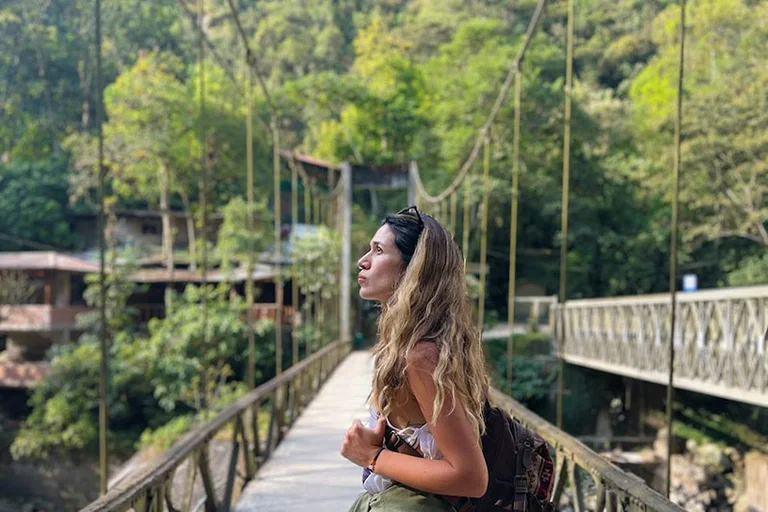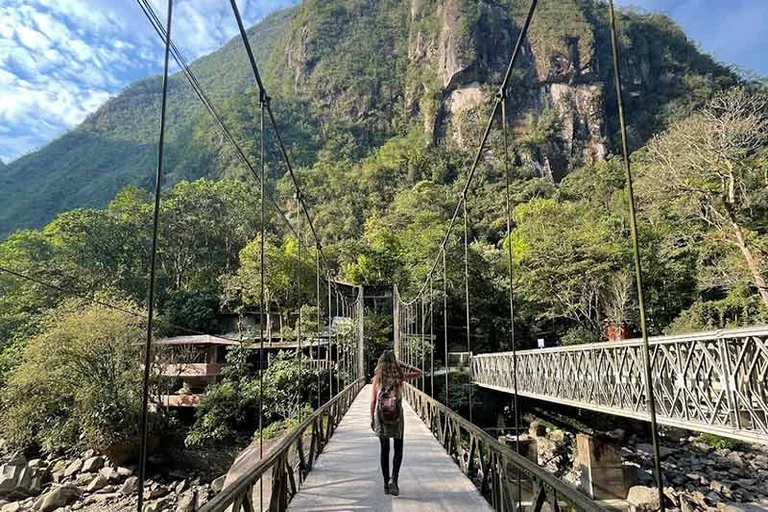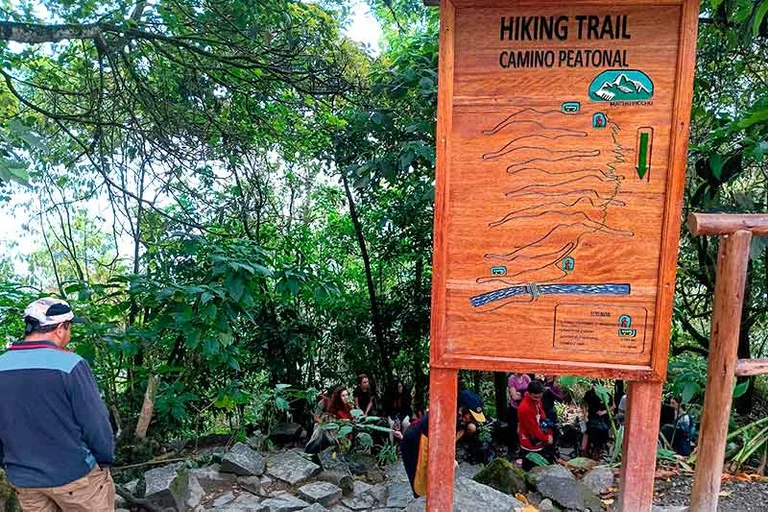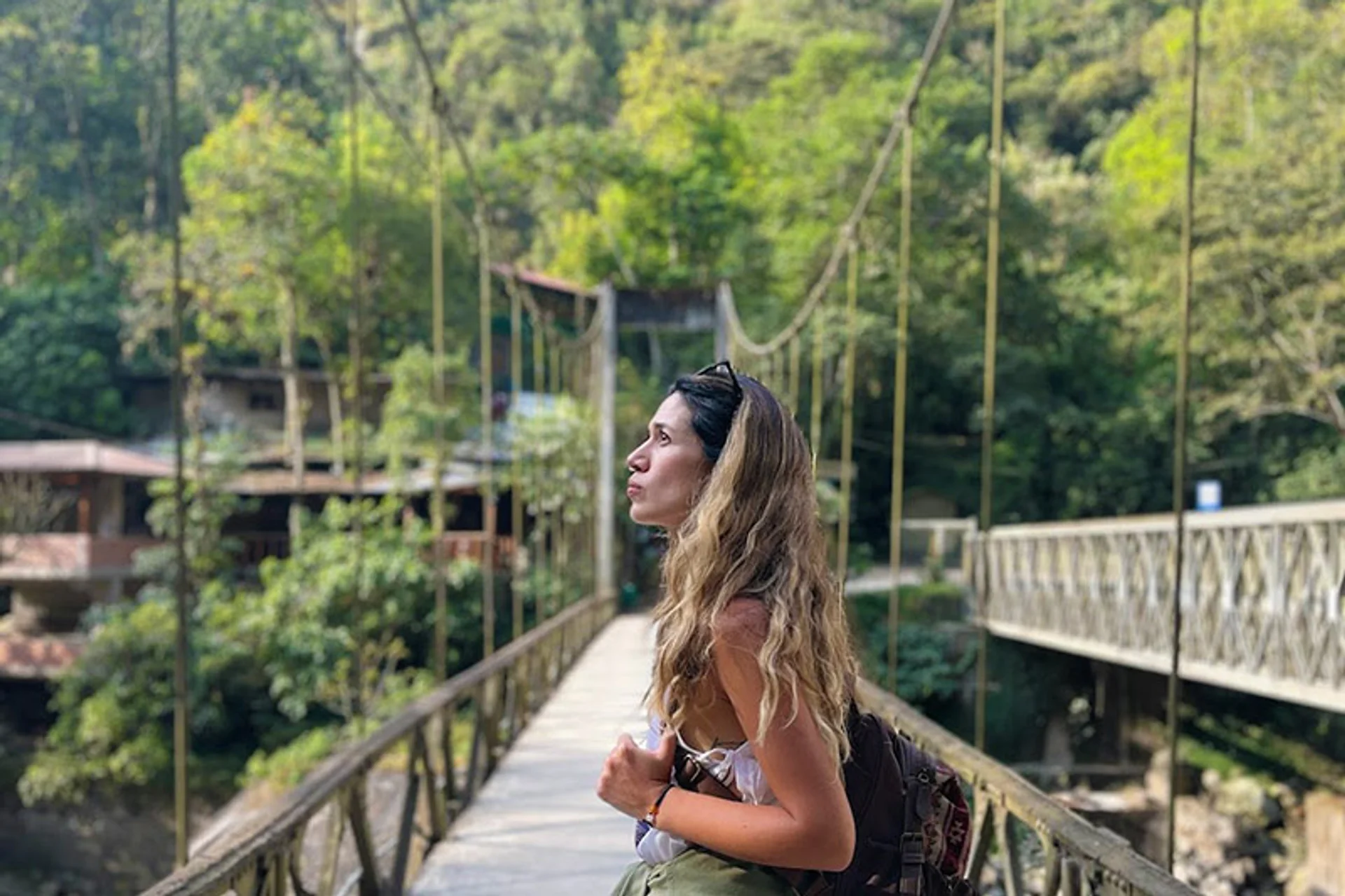The hiking route from Aguas Calientes to Machu Picchu
The hike from Aguas Calientes to Machu Picchu is a unique experience that combines history, nature, and adventure. This route not only connects two of Peru’s most iconic tourist destinations but also offers travelers an opportunity to immerse themselves in the region’s scenic richness. Discover everything about this trail and experience Machu Picchu in all its splendor.

Content
- The hike from Aguas Calientes to Machu Picchu
- Advantages of the walking route
- Comparison with bus access
- Tips for your journey
- Biodiversity of the route
- Frequently asked questions
The hike from Aguas Calientes to Machu Picchu
The hike from Aguas Calientes to Machu Picchu is a route mainly used to reach the archaeological site directly, without using the bus transportation service. The hike can take between 1.5 to 2 hours, depending on our pace and the terrain conditions.
The journey begins in the town of Aguas Calientes. From there, the path moves in a straight line until reaching the point where the ascent begins. From this section onward, the route gradually rises until culminating at the main entrance of the Machu Picchu citadel. This trail has been designed to minimize environmental impact, using materials and techniques that help preserve the environment while still offering a safe route for visitors.
The surroundings along the path are diverse and provide a clear example of the region’s biological diversity. In the lower parts, the landscape is filled with dense vegetation, creating a fresh and humid environment. However, as you ascend, the trees become sparser, and the sun shines more intensely. This diversity allows hikers to identify different plant species and observe a variety of birds and small animals, making it especially interesting for those who want to learn more about the area’s ecology.
The hike from Aguas Calientes to Machu Picchu
Hiking from Aguas Calientes to Machu Picchu is not only an unforgettable adventure but also beneficial for your health. This moderately difficult journey strengthens your body and soul with fresh air that oxygenates your system and relieves stress. Additionally, direct contact with nature stimulates your mind and reduces anxiety, creating an overall sense of well-being. Each step along these ancient trails becomes an opportunity to reconnect with yourself and the environment. Are you ready to challenge your limits and experience a transformative journey?
Advantages of the walking route

Choosing to walk has several advantages: economic, informational, and practical. First, it is a cost-free activity, and although it requires a couple of hours, the effort is rewarded in other ways. The hike combines physical exercise with direct observation of the environment and its biodiversity, contributing to the traveler’s overall well-being. Additionally, this option provides an educational and detailed experience. Visitors have the opportunity to learn about the area’s history through informational signs and direct observation of natural and cultural elements.
However, it is important to consider that the hike can present challenges, especially for individuals with physical limitations or those unaccustomed to uphill routes. Proper preparation and checking updated information on trail conditions are key to ensuring a good experience.
Comparison with bus access
Compared to taking the bus, which is the most common way to reach Machu Picchu, the hike offers advantages in terms of cost, direct interaction with the environment, and the ability to stop at points of interest along the way. While the bus significantly reduces travel time, walking allows for a more informative and detailed experience of the landscape, where hikers can appreciate biodiversity and minor archaeological remains. This option is ideal for visitors seeking a deeper understanding of the area’s diversity, as well as those who want to combine physical activity with their archaeological visit.
Tips for your journey
Hiking to Machu Picchu is a unique experience, but to make the most of it, proper preparation is essential. Here are some practical recommendations based on the experience of travelers and experts:
- Get physically prepared, this will help strengthen your legs and improve your endurance.
- Acclimatization: Arrive in Cusco or Aguas Calientes 1-2 days in advance to adapt to the altitude (over 2,400 meters above sea level) and avoid altitude sickness.
- Carry only the essentials, such as an ergonomic backpack, water bottles, some snacks, sunscreen, and a cap.
- Wear shoes with non-slip soles for mountainous terrain.
- Bring a waterproof jacket to be prepared for any weather changes.
- Consider starting early, begin your hike between 6:00 and 7:00 am to avoid the intense midday heat and enjoy the sunrise over the mountains.
- Respect the heritage, do not stray from marked trails or touch archaeological structures.
- Bring your passport and Machu Picchu entrance ticket in a waterproof bag.
Pay attention!
During the hike, several points of interest can be identified, providing relevant information about the region’s history and culture. For example, in certain sections, informational panels have been installed to explain how the Incas used certain paths and the strategic significance of Machu Picchu’s location. These information points help understand the site’s function and its connection to other places.
Biodiversity of the Route

During the journey between Aguas Calientes and Machu Picchu, changes in vegetation and the presence of animals can be observed. In the lower part of the trail, the climate is humid, and there are cloud forests where ferns, orchids, and plants growing on trees can be seen. As you ascend, the environment becomes colder, and the forest becomes less dense, allowing more light to enter.
Regarding wildlife, the variety of birds stands out, including small birds and hummingbirds that feed on the flowers and fruits of the area. Additionally, in the denser parts of the forest, small mammals such as rodents can be found, having adapted to live in humid conditions. The presence of these species indicates that the ecosystem remains in good condition.
This aspect should be considered valuable both for visitors interested in the region’s biodiversity and for those involved in its conservation, as it demonstrates the harmony between the environment and living beings, highlighting the importance of maintaining this natural balance.
